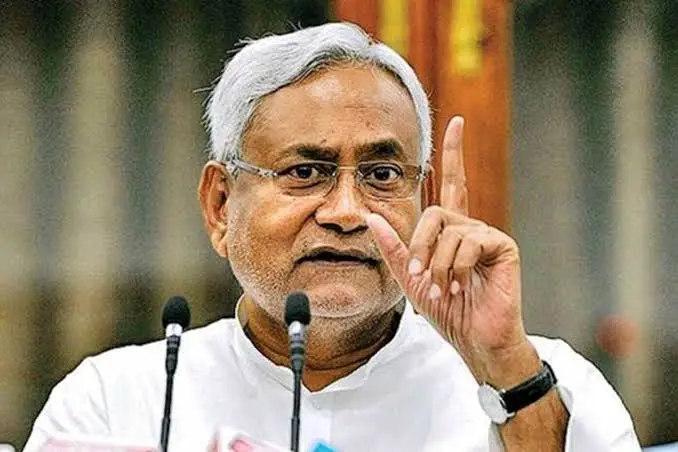The Bihar government’s ambitious welfare promise has run into hard numbers, revealing a funding requirement that dwarfs the state’s financial capacity and rivals the wealth of India’s richest man.
BY PC Bureau
November 18, 2025: Forget Jan Suraaj chief Prashant Kishor’s challenge to Chief Minister Nitish Kumar to fulfil his pre-election promise. A far more uncomfortable reality emerges when the numbers behind that promise are examined: providing ₹2 lakh each to the 1.5 crore women who had earlier received ₹10,000 as part of a pre-poll assistance programme.
During the election campaign, the government had announced that any woman who successfully utilised the initial ₹10,000—meant to launch small businesses such as tailoring, food stalls, livestock rearing, or neighbourhood enterprises—would later be eligible for a ₹2 lakh reward. The promise was made amid loud applause, but without clarity on how it would be funded.
Now, an assessment of the potential cost reveals the massive fiscal strain such a commitment would impose on a state already battling chronic revenue shortages, high debt, and a weak industrial base.
₹3 Lakh Crore: A Welfare Bill That Outruns Bihar’s Budget
If all 1.5 crore beneficiaries were deemed to have “done well” and qualified for the promised reward, Bihar would need to spend ₹3,00,000 crore.
To put this amount in perspective:
- It is more than 11 times Bihar’s annual own-tax and non-tax revenue, which together stand at around ₹27,000 crore.
- It is larger than the state’s entire annual budget, which hovers between ₹2.5–3 lakh crore, a majority of which is funded by central grants, not state revenue.
- It is roughly one-third of Mukesh Ambani’s net worth, drawing comparisons that economists describe as “absurd but unavoidable.”
A senior official in the Finance Department, speaking on condition of anonymity, admitted that the scale of this commitment was never examined realistically during the campaign.
“Even if the government diverts every rupee of its revenue, it cannot meet this promise. It is financially impossible without massive borrowing,” the official said.
READ: After Derailing RJD in Bihar, Owaisi Headed for Assam
Bihar’s Fiscal Health: A State Under Severe Strain
Economists and policy analysts note that Bihar’s longstanding financial vulnerabilities make such ambitious welfare schemes far more difficult to sustain:
- Lowest Own-Revenue Among Major States
Bihar generates one of the lowest per capita revenues in India. More than 75% of its expenditure is financed through central transfers. The state’s tax collection capacity remains weak due to limited industrialisation, low incomes, and a narrow tax base.
- Burgeoning Debt Burden
Bihar’s public debt already exceeds ₹2.6 lakh crore, with interest payments accounting for over 20% of its annual revenue. Economists warn that adding another borrowing of ₹3 lakh crore would push the state into an unprecedented fiscal crisis.
- High Dependence on Welfare Spending
Successive governments—regardless of party—have relied heavily on cash transfer schemes as political tools. This has left little room for capital investment in roads, power, industry, education, and healthcare.
“Bihar’s problem is not just insufficient revenue but how limited funds are distributed. The state spends too much on welfare and too little on capacity-building,” said a former Planning Commission economist.
The Administrative Practicalities: A Massive Ambiguity
Officials also point out that the promise lacked clarity on key issues:
- What qualifies as ‘doing well’?
No metrics were defined for business success. Was it profit, revenue, number of customers, or mere existence? - Who would conduct verification?
Monitoring and evaluating 1.5 crore micro-enterprises would require a bureaucratic machinery larger than the existing administrative workforce. - Where would the funds come from?
The state has neither the financial cushion nor the borrowing room to undertake such a large commitment.
A retired IAS officer said,
“This was a classic pre-election announcement: high on optics, low on arithmetic.”
Political Reactions: Accusations, Counter-Accusations
Prashant Kishor, challenged Nitish Kumar to honour his commitment, saying he would “definitely quit” politics if the NDA government fulfils its poll promise and gives ₹2 lakh each to 1.5 crore women under self-employment initiatives.
The fiscal experts say the debate misses the point: the promise was unworkable from the beginning.
“Politicians view welfare schemes as electoral tools, not financial obligations,” said an economist from Patna University. “The controversy shows the gap between populist rhetoric and fiscal discipline.”
The Larger Story: Populism Meets Hard Numbers
The episode has highlighted a broader structural challenge in Indian politics—ambitious welfare promises made without financial planning.
Bihar, with one of the country’s weakest fiscal positions, finds itself unable to fund development projects, let alone massive cash incentives.
Analysts say the promise raises key questions:
- Can states continue to promise large-scale cash transfers without revenue expansion?
- Should election promises be subjected to fiscal feasibility reviews?
- How long can Bihar rely on central funds while making politically driven commitments?
A Promise Unlikely to See the Light of Day
With a price tag of ₹3 lakh crore, the commitment to reward successful women entrepreneurs stands as one of the most financially unviable welfare promises ever made in the state.
As Bihar grapples with limited revenues, mounting debt, and chronic underdevelopment, the promise appears destined to remain a political slogan rather than a policy reality.
For now, the women of Bihar have moved on. The political class, however, continues to trade blame—while the numbers, stubborn as always, refuse to bend.













